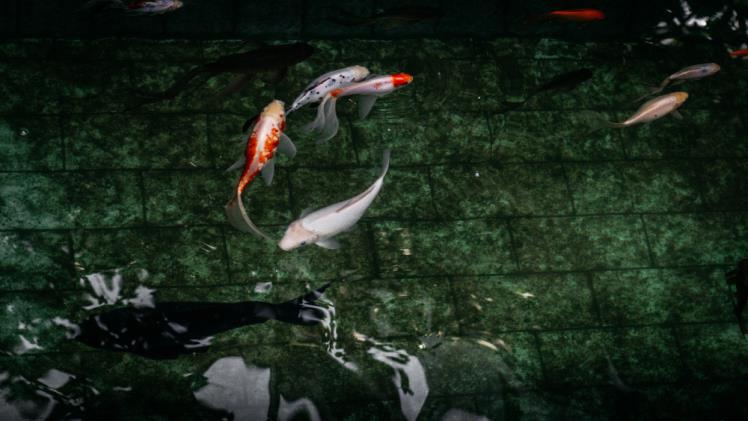An algae overgrowth is similar to an unwelcome visitor that lingers too long in a koi pond. However, controlling this green nuisance is not complicated; with some care and clever techniques, you can keep algae from taking over.
First, let’s identify the culprit – algae. Algae are plant-like organisms that thrive in sunlight, consume nutrients, and can turn ponds a vibrant green. Luckily, there are ways to prevent algae from compromising your pond’s appearance.
1. Focus on the Ecosystem
A koi pond is more than just a water-filled hole with fish. It is an entire aquatic ecosystem that requires balance. Introduce aquatic plants like water lilies and hornwort that compete with algae for nutrients. These plants not only add beauty but also help control algae growth.
2. Prioritise Feeding
Koi are cute and hungry fish. However, overfeeding them invites algae growth by leaving uneaten food that decomposes and releases nutrients algae thrive on. To discourage algae, only feed koi an amount they can consume in a few minutes. This keeps their habitat tidy and algae-unfriendly.
3. Don’t Take Shade and Shelter Lightly
Algae thrive in sunny conditions. Prevent algae growth in your pond by adding shade. Trees, strategically placed umbrellas, or floating plants can block sunlight like sunscreen, making your pond less hospitable for algae overgrowth.
4. Filter and Circulate
Stagnant water provides the ideal environment for algae growth. However, a proper filtration system and aeration can help prevent this. Filtration removes excess nutrients from the water, while aeration oxygenates it. Together, these two methods keep the water moving and create conditions less favourable for algae.
5. Maintenance is Key
Like any other part of your home, your koi pond needs regular care. Clean the filters often, remove debris as it accumulates, and watch for any signs of imbalance in the ecosystem. Addressing minor issues promptly prevents major problems later on – for example, scooping out a bit of algae now keeps it from taking over the whole pond.
6. Use Chemical Aids (But Wisely)
Sometimes, despite your best efforts, algae will find its way into your pond. Chemical treatments can help eliminate algae, but use them cautiously – they can disrupt the delicate balance of your pond’s ecosystem. It’s best to consult pond experts before chemical treatments and use them only sparingly when needed.
7. Make Seasonal Adjustments
The seasons affect algae growth in ponds. Algae thrive in summer when sunlight is strong and warm temperatures lead to rapid proliferation. To prevent excessive algal growth during summer, step up your pond care efforts, such as more frequent cleaning and better filtration. Adjusting your maintenance routine by season can significantly impact algae levels.
Cross all the T’s and Dot the I’s
To prevent an algal bloom, regularly monitor your pond water for pH, nutrients, and clarity. Catching any imbalances early gives you the best chance to correct them before algae can take over.
Preventing algae growth in your koi pond requires ongoing effort to maintain a healthy environment for your fish while inhibiting algae. With diligent care, thoughtful planning, and pond experience, you can create a beautiful algae-free pond that your fish will love. And if you need help, Koi Water Gardens is happy to help.

